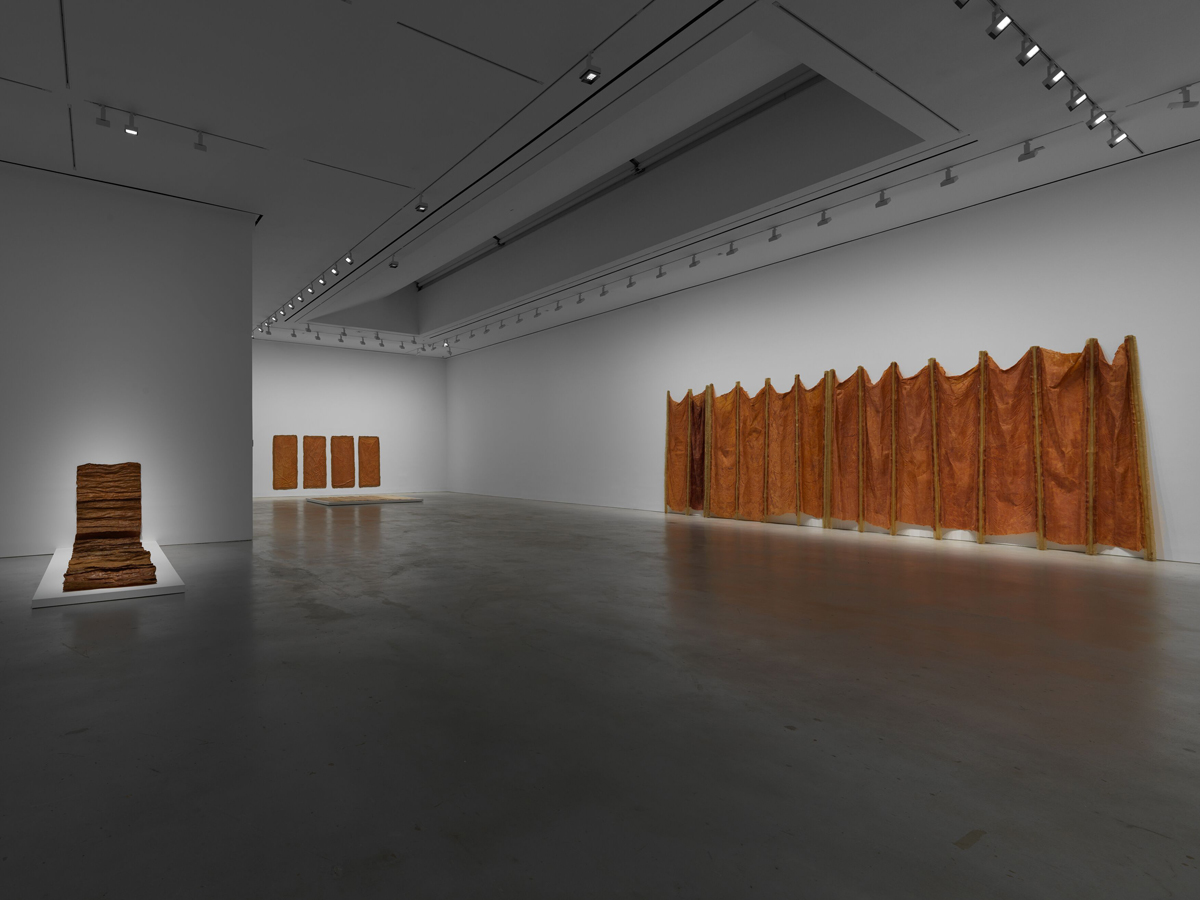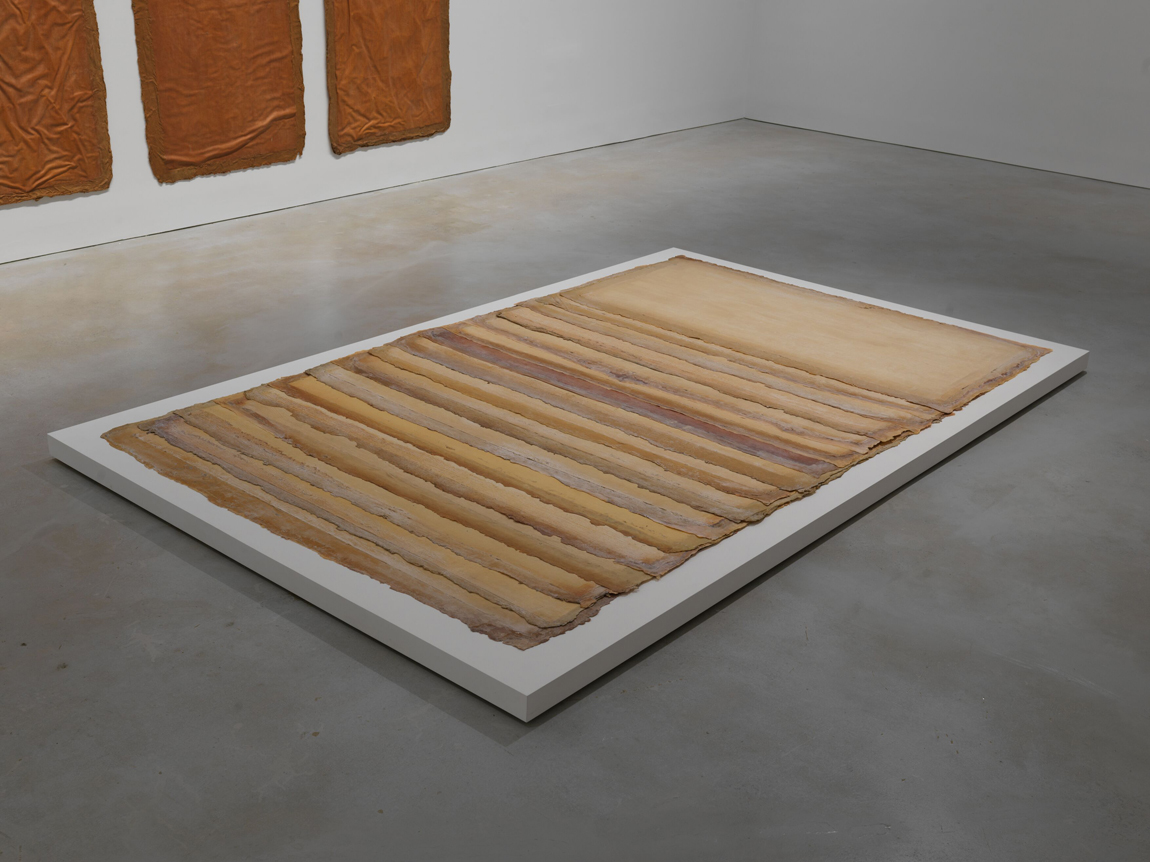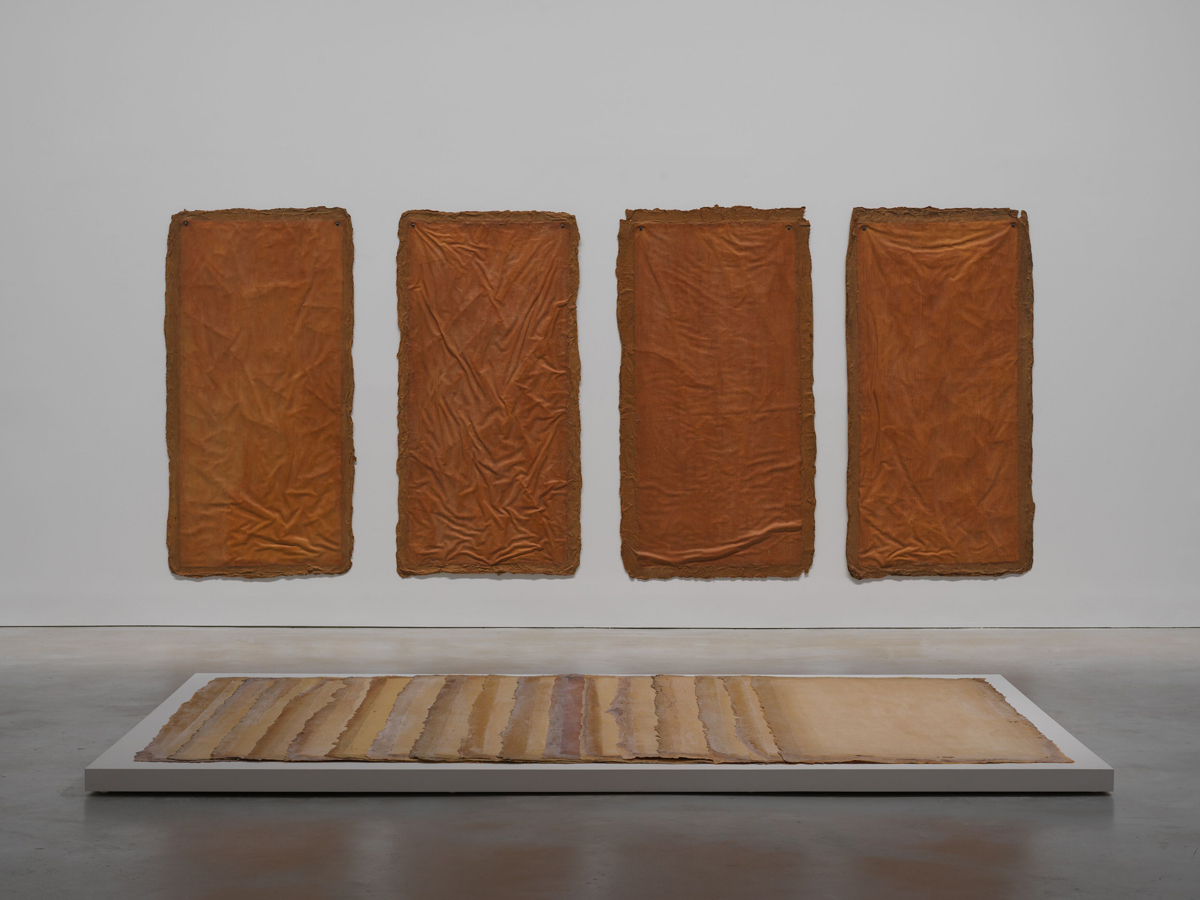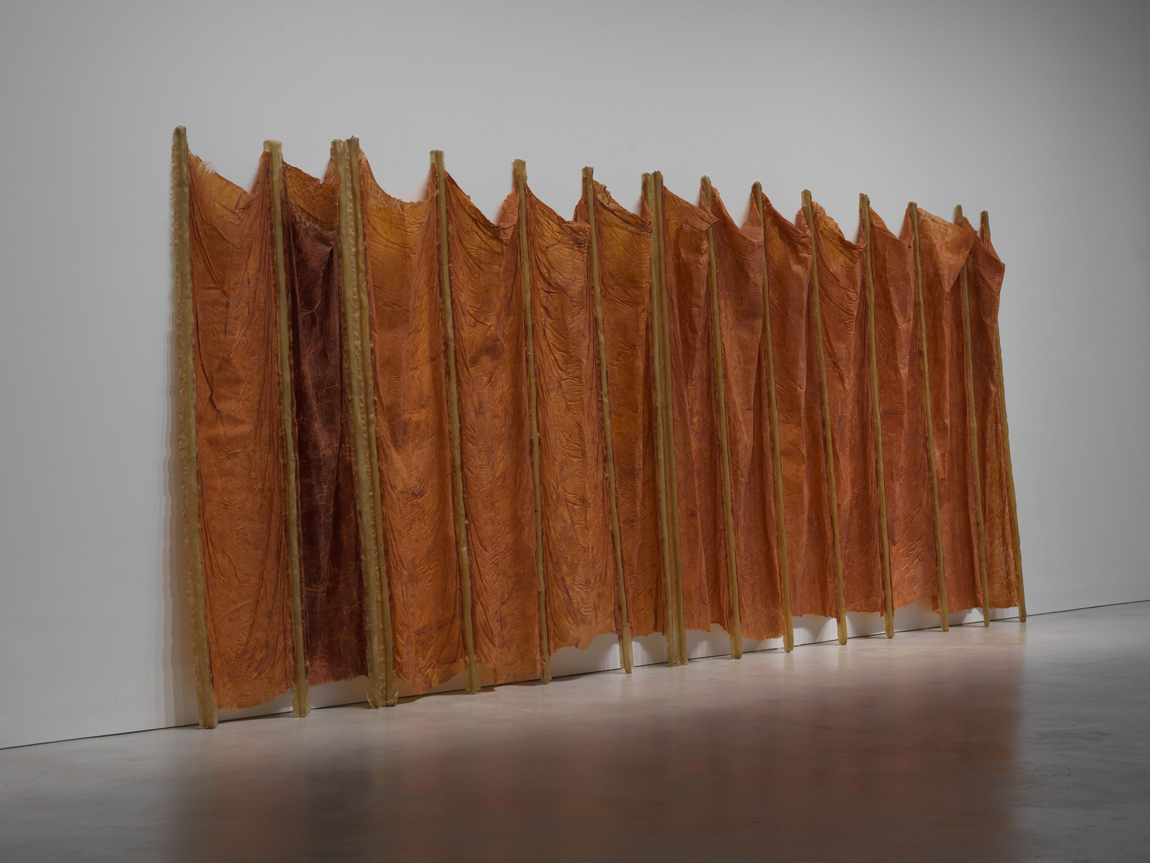 Margaret Sundell
Margaret Sundell
Mystery and mortality in five major sculptures by the artist.

Eva Hesse: Five Sculptures, installation view. Courtesy Hauser & Wirth. Photo: Matt Grubb. © Estate of Eva Hesse.
Eva Hesse: Five Sculptures, organized by Barry Rosen in collaboration with Briony Fer, Hauser & Wirth, 542 West Twenty-Second Street, New York City, through July 26, 2024
• • •
There are certain things we can easily say about Eva Hesse: that she took up and transformed Minimalism’s interest in modular forms and serial structures; that she pioneered the use of latex and fiberglass in fine art; that she engaged gravity as a means of composition. These facts give us an entry point into her work, just as knowing that she died of cancer in 1970, at age thirty-four, helps us understand its limited duration. But they in no way disclose her work’s essence—its mystery, its silence, its obdurate refusal to be rendered in language or through reproduction. Hesse’s art must be met by a body in space, and it can be—to a degree—at Hauser & Wirth’s Chelsea outpost, where five major sculptures made in the last three years of her life are currently assembled. (On loan from museums, they were brought together to commemorate the twenty-fifth anniversary of the gallery’s representation of Hesse’s estate.)
Upon entering the space, we confront Repetition Nineteen I (1967) by bending over or crouching on our knees—but we can only get so close. Composed of eighteen roughly nine-inch-high, near-identical buckets (one has gone missing), the piece is displayed on a low, white platform and covered with a plexiglass case. Repetition was initially placed by Hesse directly on the floor, in a nod to the practice of Minimalists like Carl Andre, who lay grids of metal sheeting on the ground. By eliminating pedestals, both artists asserted an equivalence between their work and things in the world, and there is indeed a prosaic quality to Repetition’s repeated forms. There is also, as with Andre’s art, a play between sameness and difference that haunts all of Hesse’s constructions. Made from painted papier-caché on aluminum screening, these cream-colored tubes reiterate each other, while each still claiming uniqueness. One lilts to the left, another bends backward, a third buckles slightly in on itself. Despite their hard, shiny, painted skins, the forms resemble natural objects, due in large part to the irregularity of the papier-caché. Straddling a second opposition, Repetition seems at once deliberately crafted and eerily organic, but the work’s presentation blunts our access to that uncanniness. Therein lies the rub with Hesse’s art: the unorthodox materials she championed have proven exceedingly fragile; they harden, oxidize, even disintegrate. Plinths and plexi may help protect her sculptures, but at a significant—some might say eviscerating—cost.

Eva Hesse: Five Sculptures, installation view. Courtesy Hauser & Wirth. Photo: Matt Grubb. © Estate of Eva Hesse. Pictured, foreground: Augment, 1968.
Two of the five pieces on view—Augment and Aught—debuted at 9 at Leo Castelli, a 1968 exhibition curated by artist Robert Morris in an enormous warehouse rented by the dealer, which situated Hesse in the company of such colleagues as Bruce Nauman, Richard Serra, and Keith Sonnier. The show was widely seen as heralding an artistic sea change away from the hard edges of Minimalist geometry toward an emphasis on process, site, and pliable material. In that legendary exhibit, Augment sat smack on the floor. Here, like Repetition, it is set on a platform that brackets the work off in the rarified realm of “art.” If it were on the ground, we might trip over Augment—that is, if it weren’t so subtly commanding. Comprising seventeen rectangular sheets of flesh-colored rubberized canvas, overlapping each other to form something like a spread deck of cards, the piece has a solemnity about it, a quietude. It invites us to approach, almost conspiratorially. As we examine the rectangles’ ragged edges, ranging in tone from violet to tan, the work shares a secret: the pleasure of slow looking. What is missing, though, is a sense of Augment’s connection to its—and our—surroundings.

Eva Hesse: Five Sculptures, installation view. Courtesy Hauser & Wirth. Photo: Matt Grubb. © Estate of Eva Hesse. Pictured, back wall: Aught, 1968.
Aught, a wall work that can be seen as the artist intended, is composed of four rectangles the same size as the sheets in Augment, which are hung using grommets. Here Hesse employs latex enfolding canvas, polyethylene drop cloths, rope, and unidentified materials stuffed between support and surface. The panels protrude slightly into space, challenging the distinction between two and three dimensions. These forms evoke narrow beds, the kind one finds in a monastery or cell, and their puckered surfaces suggest ghostly wrinkled bedsheets, as if the interior of the work was imprinted on its exterior. Or perhaps we are seeing skin creased by sleeping on mussed-up sheets. Are these, then, strange bodies? If so, the marks were made from contact with things physically present only in the past. They are the residue of lost encounters, of turbulent nights.

Eva Hesse: Five Sculptures, installation view. Courtesy Hauser & Wirth. Photo: Matt Grubb. © Estate of Eva Hesse. Pictured: Expanded Expansion, 1969.
Expanded Expansion, propped against the gallery’s main wall, is the show’s centerpiece—a sculpture over ten feet high and almost thirty-three feet long. Given its size, it’s tempting to call the construction monumental, but the word’s implications of grandiosity and permanence make no sense at all. An alternating series of fiberglass poles and expanses of latex-covered cheesecloth (all materials that decompose, sooner or later), this “monument” droops and sags. It seems more like an unwieldy banner, perhaps one used in a ceremonial procession by an ancient race of giants. Long gone, they have left us this artifact to decipher. In attempting to do so, our position is important; we must move around. Seen from afar, Expanded Expansion appears to flow, almost like fabric swept by wind. Seen from close-up, the swaths of latex resemble the tanned hide of a massive animal—in other words, something once living, but no more.
Death permeated Hesse’s short life. Born in Hamburg, of Jewish descent, in 1936, she was sent by her parents, at two years of age, from Nazi Germany to the Netherlands on one of the last Kindertransport trains. Eight years later, after the family had settled in New York City, her mother died by suicide. While the artist’s biography is nowhere present in her work, mortality is everywhere palpable. Unlike bronze or marble, latex and fiberglass will not pass the test of time. “Life does not last; art does not last,” Hesse once famously said. But even more powerfully, mortality asserts itself through an implacable awareness of the body. The sculptures at Hauser & Wirth are like so many surrogates that we, their viewers, cannot engage through sight alone. We must apprehend them with our resolutely physical, decidedly impermanent selves—and, Hesse hoped, in a space where body, art, and world all shared the same continuum. We can experience some of the works here that way. With others, we can only imagine.
Margaret Sundell is the editor-in-chief of 4Columns.